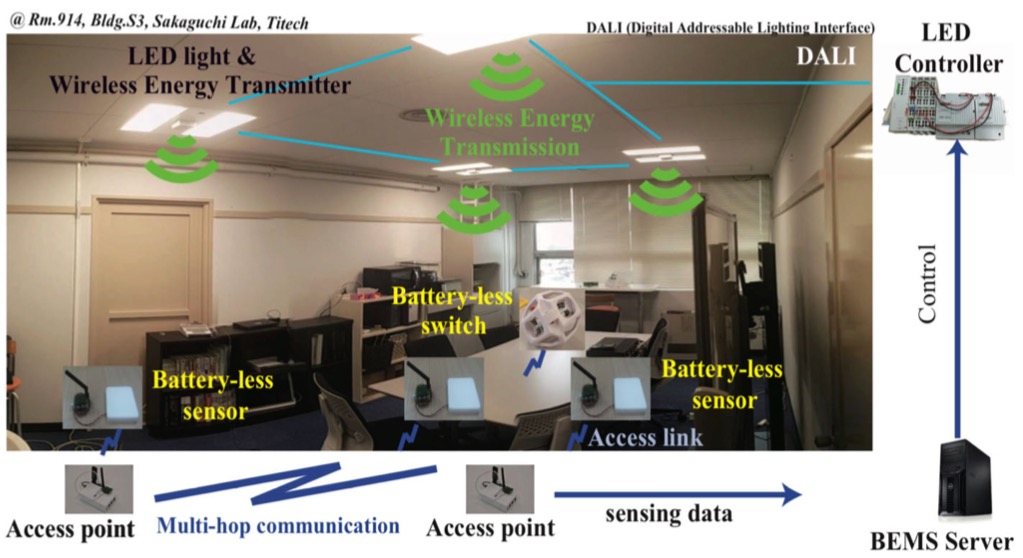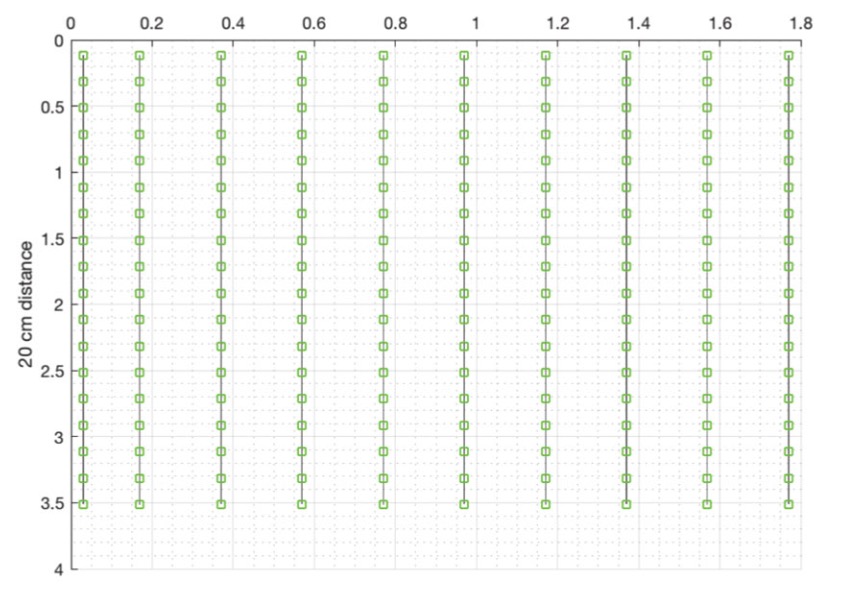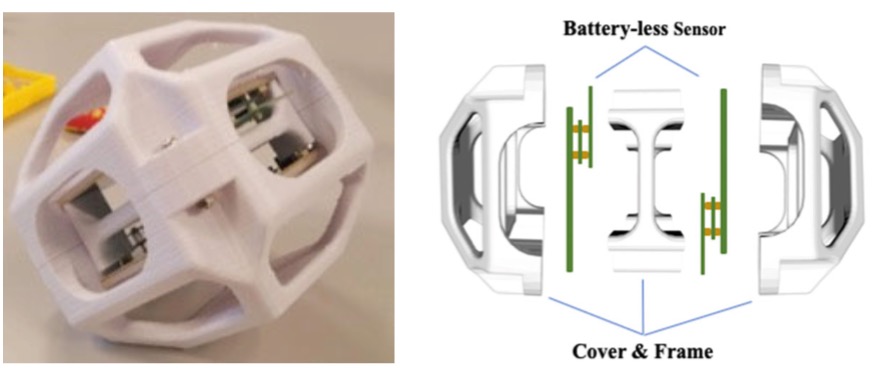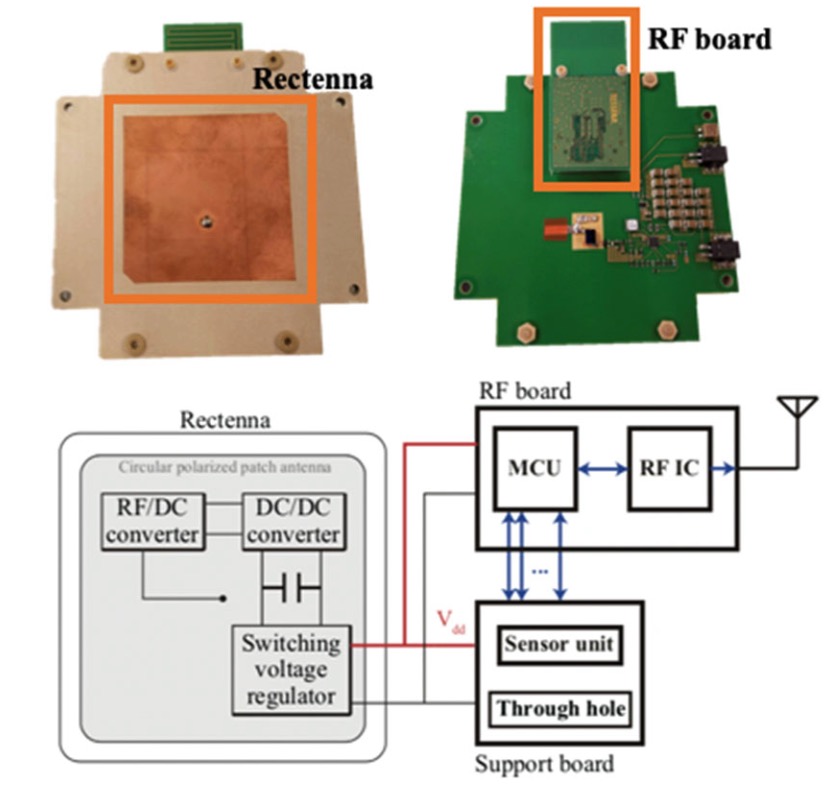Wireless Energy Transmission and Battery-less Controller
The limited battery lifetime and maintenance works of recharging of sensor nodes has long been issues in wireless sensor networks, and greatly constrained their practical applications. In order to address the problem, we proposed a wireless grid, in which battery-less sensor nodes can be activated by the multi-point wireless energy transmissions (WET) with carrier shift diversity, which can archive seamless energy supply in the target office. And it has been practically implemented in one office of Sakaguchi Lab, Tokyo Tech. The experiment results in Fig.2 confirm that the coverage for the sensor activation is 100%.

Fig.1 Wireless Energy Transmission System and the Lighting Control System

Fig.2 Coverage of the Wireless Energy Transmission
As an application of WET and building energy management, an automatic office lighting system controlled by battery-less switches is designed and implemented. The lights’ all actions (e.g., turn on/off, dim up/down, change colors) are controlled by the different laying angles of the switch, which is battery-less and activated by the wireless energy transmitters from the ceiling. Fig.3 shows the switch’s sandwich-structure, and its frame and covers are all 3D- printed. One switch has two back-to-back battery-less sensors, whose design is shown in Fig.4, in order to ensure that the rectennas can receive energy from omni- directions. The battery-less sensors sense the angles and transmit the data to the controller through multi-hop wireless communications because of the limited power.

Fig.3 Battery-less Switch and Its Structure

Fig.4 Battery-less Sensors
